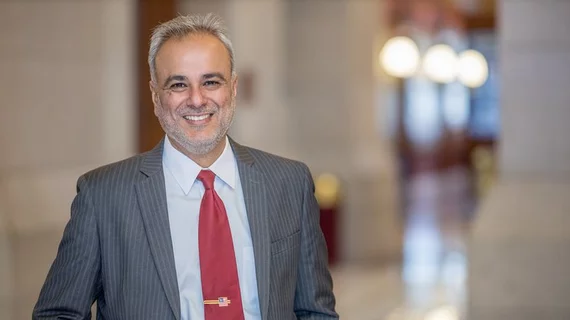State senator wants task force to study private equity’s impact on radiology
A state lawmaker in Connecticut wants to establish a task force to study “the negative impacts” of private equity involvement in the “provision of radiology services.”
Democratic Sen. Saud Anwar, MD, proposed Bill No. 489 last month amid concerns about care delays at Hartford-based Jefferson Radiology. The practicing pulmonologist, who represents South Windsor, also issued a second proposal with a broader scope beyond imaging.
Bill No. 567 would expand the authority of the Connecticut attorney general and commissioner of health strategy. This would allow government officials to regulate private equity ownership of radiology groups, hospitals and drug rehab facilities. Anwar additionally wants to restrict any “self-dealing property transactions” among these types of providers, according to the bill text. Both proposals have been forwarded to Connecticut’s Committee on Public Health for further review.
“Healthcare has suffered in Connecticut because of private equity,” Anwar told Radiology Business Thursday by email. “We’ve had cases where private equity has bought radiology offices and then changed the terms of radiologists’ employment, leading to mass exodus of staff at impacted locations and from the region. This causes delays in critical reports being provided to referring physicians. This has happened multiple times and reaffirms that private equity is highly likely to compromise care in favor of profits.”
Asked if he was speaking about Jefferson Radiology, the senator’s office confirmed but did not elaborate further. Founded in 1963, Jefferson Radiology is one of Connecticut’s largest and most respected imaging groups, employing nearly 80 physicians working across 10 locations, according to its website. Mednax acquired the practice in September 2017 before selling its entire radiology business line to Rad Partners for $885 million in December 2020.
El Segundo, California-based RP, which is minority-owned by PE firm Whistler Capital Partners, issued a statement Thursday in response to the senator’s comments. The radiology practice also previously detailed some of the measures it is taking to address wait times, among them, tapping into RP’s nationwide network of thousands of physicians.
“No provider wants backlogs,” an RP spokesperson said Feb. 6. “The reality is, there is a national shortage of radiologists and ever-increasing demand for imaging across the country. When Connecticut-based, RP-affiliated practice Jefferson Radiology faced an imaging backlog, our national network of radiologists was able to step in and provide cross-reading support, allowing Jefferson to rapidly process studies, restore timely results for patients, and resolve the backlog. Scale, technology and surge capacity for physicians, along with close partnership with hospital systems, are the keys to mitigate delays and keep up with patient needs. Our first commitment is—and will always be—to patient outcomes. We actively partner with local and national leaders to address the larger concerns of ever-increasing demand for imaging services.”
The American College of Radiology shared news of Bill No. 567 on Thursday in a roundup of legislative developments across several states. A college spokesman said “ACR is monitoring the bill and any progress it makes,” adding that the Radiological Society of Connecticut “is as well.”
Sen. Anwar originally sent a news announcement about his legislative proposals on Jan. 17. Along with care delays at Jefferson Radiology, he was prompted by the bankruptcy of Prospect Medical Holdings, which operates 16 hospitals across Connecticut (3), California, Pennsylvania and Rhode Island.
“At the end of the day, about half a million people—1 in 7 Connecticut residents—live in the service area of these three impacted hospitals,” Anwar said last month. “Interruptions and issues with their care can worsen their health outcomes and create knock-on effects that hamper our medical systems statewide. These bills are meant to prevent the consequential mistakes we’ve seen with Prospect from being repeated in the future.”

